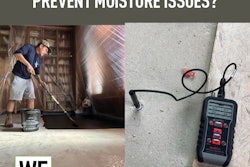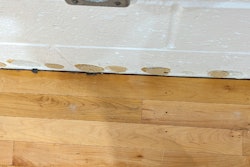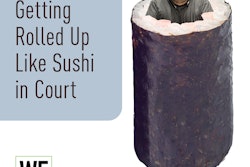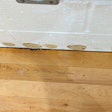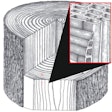Making the Grade
I recently purchased some select grade oak, and after the floor was installed, I felt as though the wrong material was installed. Don't all select floors have to be about the same?
Cort Dunlap, owner at Seattle-based Bamboo & Hardwood Inspections and an NWFACP-certified inspector, answers:
No, they don't. Although "select" has had a specific grading definition for many decades, manufacturers are only held to that if their flooring is certified under NOFMA/NWFA standards. Those products will adhere to strict grading rules and be consistent; if a product is certified and it is "select," you know what you are getting.
If manufacturers are not NOFMA/NWFA-certified, they may use the name "select" but have their own proprietary grades-so what one manufacturer calls "select" may not look like what another manufacturer sells as "select." Basically, from a legal standpoint, manufacturers could sell bark with a tongue and groove on it and call the material "select" if they wanted to. Since the rules are not printed and sent with the flooring, oftentimes the end user just gets a sample to look at and picks the flooring grade. Not infrequently, the sample does not reflect the content of the actual grade, and this leads to a lot of confusion.
Oftentimes, consumers seem to buy wood flooring on a lark, even though it may be the largest purchase in their home. When you buy a car, you do lots of research about the car and know what you're getting before you spend $25,000 or more. You don't just say, "Ooo, it's red, I like it!"-which is the approach some people seem to take with hardwood flooring. Help your customers do the research prior to their actual purchase. Grading of wood is a very complex, often-overlooked part of buying a wood floor, and that can lead to a lot of buyer's remorse.
Seeking Balance
I keep seeing references to a wood floor's EMC-what is that, exactly? Is it important?
Grete Heimerdinger, vice president at moisture meter manufacturer Lignomat, answers:
Every floor installer and inspector should know about the magic phrase "equilibrium moisture content" and what it means. The EMC is the moisture content when wood is stable-it is neither gaining nor losing moisture. The EMC changes depending on the relative humidity and temperature. Comparing the actual moisture content to the equilibrium moisture content indicates if a wood floor is stable, or if it will lose or absorb moisture, leading to shrinking or swelling.
You can predict whether a floor will change (or move or shrink or swell) using an EMC chart-you can match up the temperature and relative humidity to see what the EMC of the wood should be (an easy way to reference this is in the U.S. Forest Product Laboratory's Wood Handbook; the chapters are available for free online and the EMC chart is Table 4-2). According to the chart, for example, we could look at the case of a "perfect" floor installed when it has a moisture content of 6.9%, the relative humidity in the home is 35%, and the temperature is 70 degrees-it is installed at its EMC. In the dry winter months, with the heat on, the humidity inside the home falls to 20%. The wood floor will consequently lose moisture down to 4.5%, and gaps may occur. In the moist summer months, the same floor could pick up moisture to a moisture content of 10.1% if the relative humidity stays around 55%.
Is Red Rosin OK?
We've been using red rosin paper on our plywood subfloors for many years before we install hardwood, but someone recently told me that it isn't acceptable. What's wrong with it?
Don Conner, technical director at NWFA, answers:
Our NWFA Installation Guidelines explicitly state (in Appendix C, page 10, note 4) that you should not use red rosin paper for installing wood flooring, and I'm not aware of any U.S. manufacturer that recommends it; the reason is that it's not a moisture inhibitor. In fact, it holds moisture-if you put a drop of water on red rosin paper, it soaks in like it would on a paper towel. What you need is a product that reduces moisture vapor migration from the subfloor, and there are many products on the market today that will do that. When you're choosing a product, check the perm rating-that tells you how much moisture it will allow through-to make sure it's in the right range for the wood flooring and the subfloor on the job.
Some people also use red rosin paper to cover an installed floor to protect it from other trades, but that isn't recommend, either, because it can leave a residue on the floor. On a prefinished floor, you can actually see a haze that the paper leaves behind on the surface of the floor, and on an unfinished floor, it could inhibit finish adhesion.
The best way to make money in this business is to get training, because best practices and products change. Make sure you're up to date on the latest products that will work the best for your jobs.














